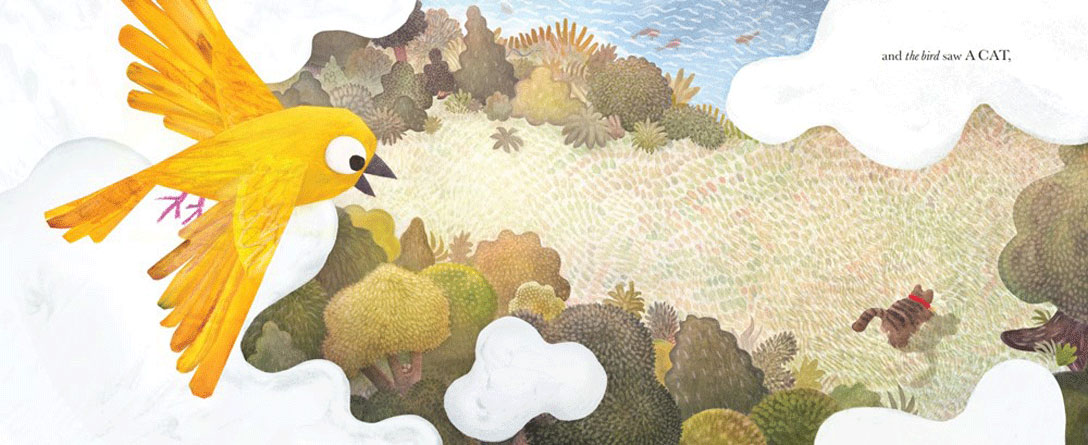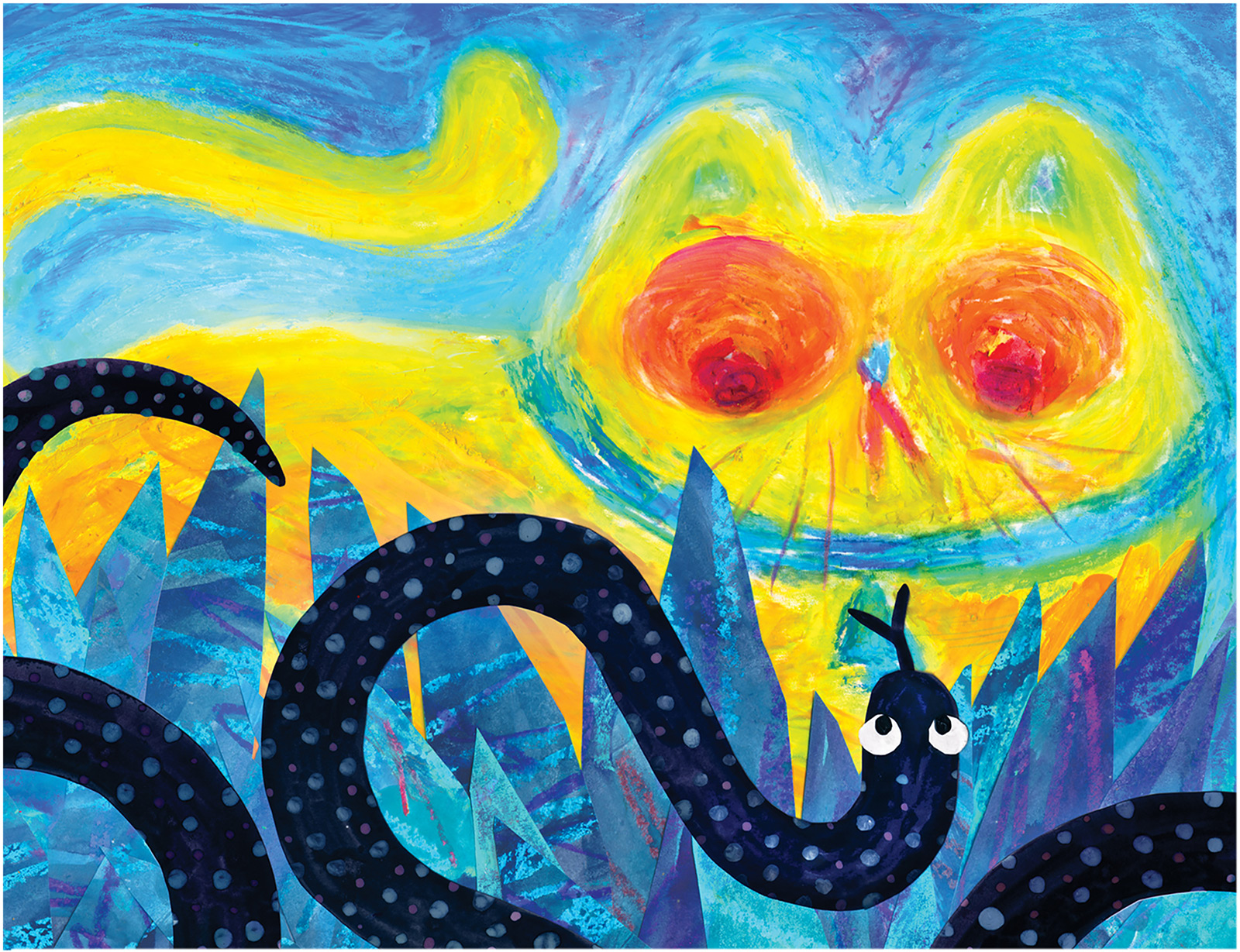
Is there anything left to say about cats in children’s literature? After all, we’ve got Jenny, Findus, Mog, and a host of other world-famous literary felines. It seems that we’ve heard it all when it comes cats—dogs, too, for that matter. Well, that was my thinking until very recently—that the “cat collection” on our bookshelf was complete. That is, until we came across a book my youngest children simply fell in love with. They All Saw a Cat Most recent English edition: Scholastic, 2018. ISBN 9781338267723. , is the premise put forth by author Brendan Wenzel. But the cat sees us, too, and in entirely different ways. And all the people and animals that encounter it, in turn, see the cat in their own way. My middle child, Mitya, and I decided this was an interesting game. They All Saw a Cat became the first book he ended up reading independently, eagerly, cover to cover. And then we brought home a kitten.

You wouldn’t quite call it the typical reading book. In its presentation, it’s more of a book to look through and play with. The label “Ages 0+” suggests that it would be interesting even for the very youngest reader. That’s absolutely true. Play enables a little reader to make some fundamental discoveries. Still, this book is also perfect for a first independent read.
Brendan Wenzel’s idea is an amusing and original one. The book shows kids how a typical tabby cat looks from the perspective of a mouse, a bird, a little fish, a child, a bee, and even a worm. It seems to upend our expectations about how to interact with the world. From the very first page (“The cat walked through the world, with its whiskers, ears, and paws…”) this impressive, stripey, furry main character leads the young reader to expect a series of feline adventures, mouse chases or the like. But it turns out this cat just walks along and does absolutely nothing else, while everyone he comes across looks at him.

Image: scholastic.com
With each encounter, the cat appears in a new light: elongated as it slinks away from the dog, curious and big-eyed at the feet of the child, red-bloody-clawed in the eyes of the mouse frozen in fear. It’s most unusual as a thermal image seen through the eyes of the snake or as a serious of soundwaves, which is the way the earthworm perceives the cat passing on the ground above him. The skunk, the bat, the bee—each has its perspective, and each is different. But the cat is the same! This is one significant discovery you can discuss while looking through the book with a child: different animals (and people!) may see the world in completely different ways. And that’s a wonderful thing!

Image: brendanwenzel.info
Brendan Wenzel does an excellent job of bringing this idea to life with bright colors and the expressive motion of his characters. On one page all you see is fluffy fur, a veritable expanse of vine-like hairs. That’s the way a flea, hanging on to a strand, sees the cat.
The book is fascinating to look at, with its bright pictures and high level of detail pulling the child right in. It can teach her to truly observe, to notice the “little things.” In our fast-paced world, children have ever fewer chances to just look around, to think, to wonder. They are expected to outgrow these “behaviors” ever sooner. By age three, most little residents of big cities are kept busy with one “enriching” activity after another.
Then along comes this cat...who cares, right? But it turns out that if you just watch the cat and the world around it, the world of the watching child changes too. It might cut down a bit on a child’s selfishness, for example. It may just help him accept that the other is Other and sees the world in his own way. That it’s best to talk things out with the Other on matters that concern him. Of course, a preschooler won’t have this complicated moral framework in mind, but a reminder from Mom—“Remember how everyone saw the cat?”—will be unexpectedly helpful.
And yet, at the end of the day, it’s first and foremost a book, not a series of pictures to look at. Look closer and it’s a captivating read for the newly independent reader. Unlike his older brother and sisters, our Mitya doesn’t much like to read, though he knows how. He prefers listening. For a long time, I couldn’t find the right book for him, one he could read himself and enjoy.
This one fit. It has large font, a repetition of the same words and phrases. Reading through recognition, Montessori’s intuitive reading, Glenn Doman’s total reading—call it what you will, but it works. It’s all a lot more fun than reading any other unfamiliar text, sounding out the syllables. And since it’s more fun, it’s easier, and faster. Mitya took to The Cat with joy, succeeded in reading it, and was very pleased with himself. Beginning readers are afraid of big books, even as they dream of reading a big book with a thick cover. That way they can show adults and friends that matter—look, I read books now, not flash cards or ABCs—real books! And our “cat” managed wonderfully.
Elena Litvyak
Translated from the Russian by Alisa Cherkasova
Follow us on Facebook.
